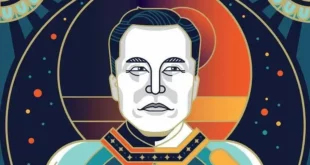Alain de Benoist
Occidental Observer
September 14, 2014

Translated from the Spanish by Lucian Tudor
* This was translated into English from the Spanish version titled “Identidad y Diferencia,” published in the digital journal Elementos: Revista de Metapolítica para una Civilización Europea, No. 47 (May 2013): 3-10. The Spanish text was the translation and combination of the original French articles titled “Le droit à la différence” and “Qu’est-ce que l’identité? Réflexions sur un concept-clef,” published in Eléments, No. 77 (April 1993): 24-25 & 44-47. The translator wishes to thank Daniel Macek for reviewing the translation and Alain de Benoist for approving of the translation.
Difference
The debate about immigration has raised in a sharp manner the questions of the right to difference, the future of the mode of community life, of the diversity of human cultures and of social and political pluralism. Questions of such importance cannot be treated with brief slogans or prefabricated responses. “Let us, therefore, oppose exclusion and integration,” writes Alain Touraine. “The first is as absurd as it is scandalous, but the second has taken two forms that need to be distinguished and between them there must be searched for, at least, a complementarity. Speaking of integration only to tell the new arrivals that they have to take their position in society as such and what it was before their arrival, that is much closer to exclusion than of a true integration.”[1]
The communitarian tendency began to affirm itself in the early eighties, in liaison with certainly confusing ideological propositions about the notion of “multicultural society.” Later it seemed to be remitted due to critiques directed against it on behalf of liberal individualism and “republican” universalism: the relative abandonment of the theme of difference, considered as “dangerous,” the denunciation of communities, invariably presented as “ghettos” or “prisons,” the over-valuation of individual problems to the detriment of the groups, the return of a form of purely egalitarian anti-racism, etc. The logic of capitalism, which, to extend itself, needs to make organic social structures and traditional mentalities disappear, has also had weight in that sense. The leader of immigrant minorities, Harlem Désir, sometimes accused of having inclined towards “differentialism,”[2] has been able to boast of having “promoted the sharing of common values and not the identitarian tribalism, the republican integration around universal principles and not the construction of community lobbies.”[3]
All the critique of the mode of community life is reduced, in fact, to the belief that difference obstructs inter-human understanding and, therefore, integration. The logical conclusion of that approach is that integration will remain facilitated with the suppression of communities and the erosion of differences. This deduction is based on two assumptions:
- (1) The more “equal” are the individuals who compose a society, the more they will “resemble” each other and the less problematic their integration will be;
- (2) Xenophobia and racism are the result of the fear of the Other. Consequently, to make otherness disappear or to persuade each one that the Other is a small thing if compared with the Same, it will result in its attenuation and even its nullification.
Both assumptions are erroneous. Without doubt, in the past racism has been able to function as an ideology that legitimized a complex — colonial, for example — of domination and of exploitation. But in modern societies, racism appears rather as a pathological product of the egalitarian ideal; that is to say, as a door of obliged departure (“the only way to distinguish oneself”) in the bosom of a society that, adhering to egalitarian ideas, perceives all difference as unbearable or as abnormal: “The anti-racist discourse,” writes Jean-Pierre Dupuy in this respect, “considers as an evidence that the racist depreciation made of the other goes on par with a social organization that prioritizes beings based on the function of a criterion of value. … [But] these presuppositions are exactly contrary to what we learn from the comparative study of human societies and of their history. The most favorable medium for mutual recognition is not the one which obeys the principle of equality, but rather that the one which obeys the principle of hierarchy. This thesis, which the works of Louis Dumont have illustrated in multiple ways, can only be comprehended with the precondition of not confusing hierarchy with inequality, but rather, on the contrary, by opposing both concepts. … In a true hierarchical society, the hierarchically superior element does not dominate the inferior elements, but is different from them in the same sense in which all the parties are encompassed, or in the sense in which one party takes precedence over another in the constitution and in the internal coherence of the whole.”[4]
Jean-Pierre Dupuy also notes that xenophobia is not defined solely by fear of the Other, but, perhaps even more, by fear of the Same: “What people are afraid of is the indifferentiation, and this because indifferentiation is always the sign and product of social disintegration. Why? Because the unity of the whole presupposes its differentiation, that is to say, its hierarchical conformation. Equality, that principle that denies differences, is the cause of mutual fear. People are afraid of the Same, and there is the source of racism.”[5]
The fear of the Same raises mimetic rivalries without end, and egalitarianism is, in modern societies, the motor of those rivalries in which each seeks to become “more equal” than the others. But, at the same time, the fear of the Other is added to the fear of the Same, producing a game of mirrors which prolongs itself to infinity. Thus, it can be said that the xenophobic ones are just as allergic to the other identity of the immigrants (real or imagined otherness) as, conversely, to how much in these is not different, and that xenophobia is experienced as a potential threat of indifferentiation. In other words, the immigrant is considered a threat at the same time as an assimilable person and as a non-assimilable person. The Other is thus converted into a danger to the extent that it is a carrier of the Same, while the Same is a danger to the extent that it pushes the recognition of the Other. And this game of mirrors works all the more as how much atomized the society is, composed of increasingly isolated individuals and, therefore, increasingly vulnerable to all conditions.
Thus one can better understand the failure of an “anti-racism” that, in the best of cases, does not accept the Other more than to reduce it to the Same. As much as it erodes the differences with the hope of facilitating integration, the more it in reality makes it impossible. The more it thinks to battle against exclusion by desiring to make immigrants uprooted individuals “like everyone else,” the more it contributes to the advent of a society where mimetic rivalry culminates in exclusion and generalized dehumanization. And finally, the more the “anti-racism” is believed in, the more it appears like a racism classically defined as the negation or radical devaluation of group identity, a racism that has always opposed the preeminence of a single obligatory norm, judged explicitly or implicitly as “superior” (and superior because it is “universal”) over the differentiated modes of life, whose mere existence seems incongruous or detestable.
This anti-racism, universalist and egalitarian (“individuo-universalist”), extends the secular trend that, under the most diverse forms and in the name of the most contradictory imperatives (the propagation of the “true faith,” the “superiority” of the White race, the global exportation of the myths of “progress” and “development”), has not stopped practicing the conversion seeking to reduce diversity everywhere, that is to say, precisely, trying to reduce the Other to the Same. “In the West,” observes the ethno-psychiatrist Tobie Nathan, “the Other no longer exists in our cultural schemas. Now we only consider the relation with the Other from the moral point of view, meaning, not only in an inefficient way, but also without procuring ourselves the means to understand it. The condition of our education system is that we are to think that the whole world is alike […]. To say ‘I must respect the other’ is something that makes no sense. In the everyday relation, this kind of phrase has no sense if we cannot integrate our schemes to the fact that naturally, the function of the Other is precisely to be Other. […] France is the most insane country for that. […] The structure of power in France seems unable to integrate even those small fluctuations which are the regional languages. But it is exactly from this conception of power from which humanistic theory was constructed, up to the universal Declaration of human rights.” And Nathan concludes: “Immigration is the real problem at the foundation of our society, which does not know to think of difference.”[6]
It is time, then, to recognize the Other and to remember that the right to difference is the principle that, as such, is only worth its generality (nobody can defend their difference except to the extent that they recognize, respect, and defend also the difference of the other) and whose place is in the broader context of the right of the peoples and of ethnic groups: The right to identity and to collective existence, the right to language, to culture, to territory and self-determination, the right to live and to work in their own country, the right to natural resources and to the protection of the market, etc.
The positive attitude will be, to reference the terms of Roland Breton,
that which, starting with the recognition of the right to difference, admits pluralism as a fact which is not only ancient, durable, and permanent, but also positive, fertile, and desirable. The attitude that resolutely turns its back to the totalitarian projects of the uniformization of humanity and of society, and which does not see in the different or deviant individual one who must be punished, nor as a sick one who must be cured, nor as an abnormal one who must be helped, but rather another self, simply provided with a set of physical traits or cultural habits, generators of sensibility, of tastes, and of aspirations of their own. On a planetary scale, it is tantamount to admitting, after the consolidation of certain sovereign hegemonies, the multiplication of independencies, but also of interdependencies. On the regional scale, it is tantamount to recognizing, against centralisms, the processes of autonomy, of self-centered organization, of self-management. … The right to difference supposes the mutual respect of the groups and of the communities, and the exaltation of the values of each one. … To say ‘long live the difference’ does not imply any idea of superiority, of domination and of contempt: the affirmation of oneself is not the lowering of the other. The recognition of the identity of an ethnicity can only subtract from others what they have unduly monopolized.[7]
The affirmation of the right to be different is the only way to escape a double error: that error, very widespread in the Left, that consists of believing that “human brotherhood” will be realized on the ruins of differences, the erosion of cultures, and the homogenization of communities, and that other error, widespread in the Right, which consists of the belief that the “rebirth of the nation” will be achieved by inculcating in its members an attitude of rejection towards others.
______________________________________________________________________
 Daily Stormer The Most Censored Publication in History
Daily Stormer The Most Censored Publication in History


